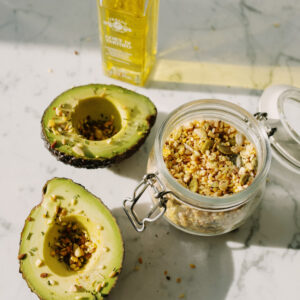They’re sweet, oily, deliciously resiny – and infinitely moreish. We’re talking pine nuts, one of the most expensive nuts in the world! Currently selling for somewhere between $90 and $135 a kilo, these special treats come from pinyon pine trees, a native of the United States. While all pine trees produce seeds, the nuts of those sold for consumption, are more mild. Although pine nuts have been available in New Zealand for many years, what few people realise, is they are now grown here!
Where?
Kiwi pine nuts are grown on stone pine trees. This variety of pine is common along the Mediterranean coast, in the same sort of places famous for olive groves and vineyards. Marlborough’s Wairau Valley, a 40 minute drive from Blenheim, supports hundreds of thousands of stone pines thanks to a combination of high sunshine hours and good soil. It is possible to see some of these trees from the road when travelling towards Marfell’s Beach from State Highway 1.
How?
New Zealand’s stone pines are planted in winter, and while it is necessary to keep grass down around new plantings, growers say they need do little else to the trees over the next 5 to 6 years to ensure the success of their plantations. As the trees grow, stock is let into the plantations. The manure from the animals helps provide natural fertilizer.
During the course of a commercial stone pine’s life, it will require pruning, and some trees will be thinned out in order to let others receive the sunlight that helps them thrive. Once stone pines become too large (usually when they are over 100 years old), harvesting from them becomes difficult. At this stage, in commercial plantations, the trees are felled, and their wood is sold.
A long time coming
New Zealand’s first pine nut plantations were planted over 20 years ago. However, it wasn’t until the trees had been in the ground for 10 years, that they were ready to deliver their first real harvest.
Harvest time
The stone pine cones, which contain the pine nuts, are harvested by hand from younger trees, using long hooked poles. The cones from older trees are harvested using tree-shaking machines, with any remaining cones being hooked down by hand. Each pine cone contains between 80 to 100 seeds. The nut (the part we eat) has to be extracted from the seed – which is where things get costly!
Extraction
The cones are left for approximately 3 months to dry out and open up before extraction takes place. It’s a highly secretive process which involves crunching the cone to separate out the seed, then cracking the seed open to reveal the nut inside. The nut (or kernel) then has to be cleaned.
 How are they used?
How are they used?
Pine nuts are not only delicious – they’re also healthy, containing more protein by weight than other nuts. Their flavour is enhanced by being lightly toasted. Pine nuts can be used as a snack, sprinkled over bread and pies, ground for use in pesto and as a dairy-free pasta topping, and added to vegetable dishes or salads.
Home grown
Edible pine nut trees can be bought in New Zealand, and while they aren’t too difficult to grow, home extraction of kernels may be a challenge. Seeds are rock hard, and cracking them open with a hammer usually results in the kernel being crushed. This aside, the tree makes a great talking a point. Just be sure you have the space for one!
Given the time and labour involved in producing pine nuts for the table, there is no reason to complain about the cost of these delicacies. Instead, we should look forward to enjoying them on special occasions, and hunt out some traditional recipes to make it happen!










Join the Discussion
Type out your comment here:
You must be logged in to post a comment.